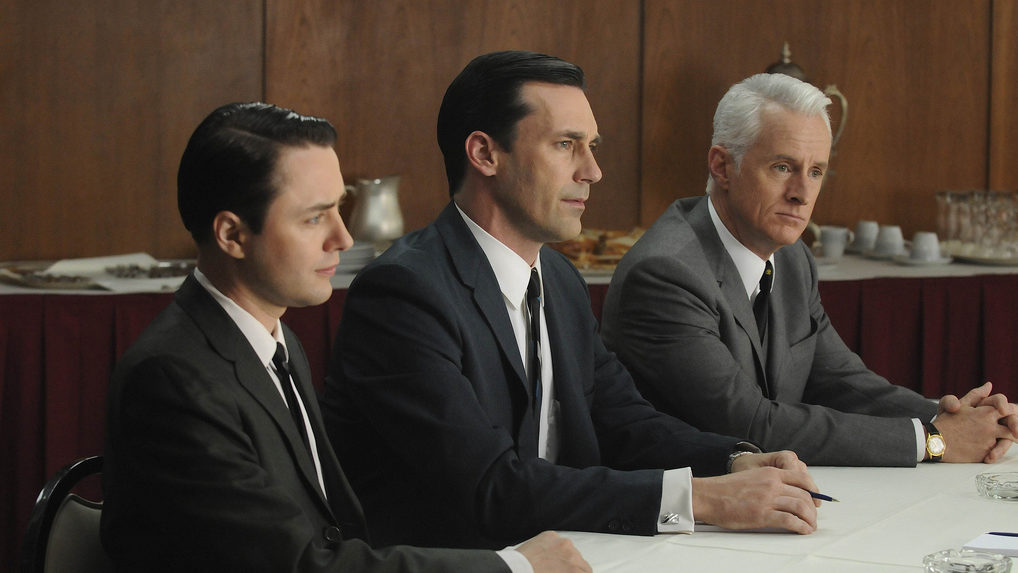Inside Track: Winning clients with creative ideas

Welcome to another edition of INSIDE TRACK.
With each of the posts in this series we’re deep diving into a particular topic that touches various sectors of our industry. From Creative Directors to Production Producers and every role in between, we aim to provide you with a regular helpful cheat sheet with all of our findings.
This month, we’ve been looking to some of the industry’s best tacticians and advisors, for tips on translating bold and brilliant creative ideas into winning pitches. Much of the reading and watching that helped form this edition came back to key repeated bits of advice, best encapsulated in a quote by Matt Waghorn. As the Group Director of Communications Planning for Huge, and with experience pitching some of the world’s largest brands like Google, Morgan Stanley, and Canada Goose, Waghorn speaks on the importance of “a [presentation] narrative based on the brand’s philosophy, a point of view that’s unique, validation for the idea so you can interrogate it, and, beyond all things, not being pretentious.”
It’s solid advice to work by at all times!
In addition to this we’ve collated more insider tips which may just help transform your next big idea into a green-lit project.
ADOPT THE TIME CONSTRAINT METHOD
Oren Klaff, author of Pitch Anything, suggests starting your pitch in a manner that generously references the audience’s attention and time. Something like, “Everyone, let’s get started. I’ll need only about 20 minutes of your time to give you the big idea, which will leave us some time to talk it over before I leave you to the rest of your day.” By not diving directly into the details and instead demonstrating a respect for an audience’s limits, you signal that you have their needs and interests at the forefront, ensuring your presentation begins with an air of positivity.
OFFER PAIN RELIEF
Any creative is likely to be enamoured with their own unique idea. However a client’s mind won’t be swayed by enthusiasm and cleverness alone. Keep in mind that the client is interested in ‘pain relief’ – solutions to reduce the challenges and frustrations they face. Know what their pain is, then help them show them how your idea will alleviate that pain. While preparing for your presentation, run through as many potential client responses and objections as possible, to be able to tackle any concerns or questions. Surround your idea with as much information as possible, including timelines, anticipated costs, potential partners; hypothetical is appropriate at this stage, but be as specific as possible.
Don’t make a presentation, have a conversation
Details are important to make an idea feasible. Tell a personal story about your process. Describe how you worked through a concept. You’re not just selling your services, you’re selling an idea. TIP! Tapping into emotion is key, and music is an essential tool to engage and emotionally support creative ideas. In fact, music ought to be factored in from the earliest idea generation stage of the project, such as animated storyboards, mood films etc.
LEAD YOUR CLIENT TO THE SOLUTION WITH YOU
People naturally prefer to feel empowered to make their own decisions, and by carefully presenting your sequence of ideas through a series of questions, you can slowly lead your audience to the correct answer. By guiding a person’s thought process, instead of telling it where to go next, you share the understanding that your solution is the right solution. When you hard sell people will naturally try to look for the holes in your reasoning. With this approach, others may be more inclined to embrace your idea because they discovered it themselves — albeit through your guidance.
KEEP IT SIMPLE
Plainly: if your idea can’t be described in simple, straightforward language, it might need to go back to the drawing board!
HELP YOUR AUDIENCE “SELL UP.”
The person you’re presenting to will usually need to get approval from someone else in their decision-making process. Help them do this by giving them the tools to sell it. When assembling a presentation, make sure that it can stand on its own without you, so that the person you’re selling to has the tools to defend it to other decision makers.
Sources
The Drum
Eyes On Sales
Fast Company
Harvard Business Review
Hubspot blog
Kevin Eikenberry


